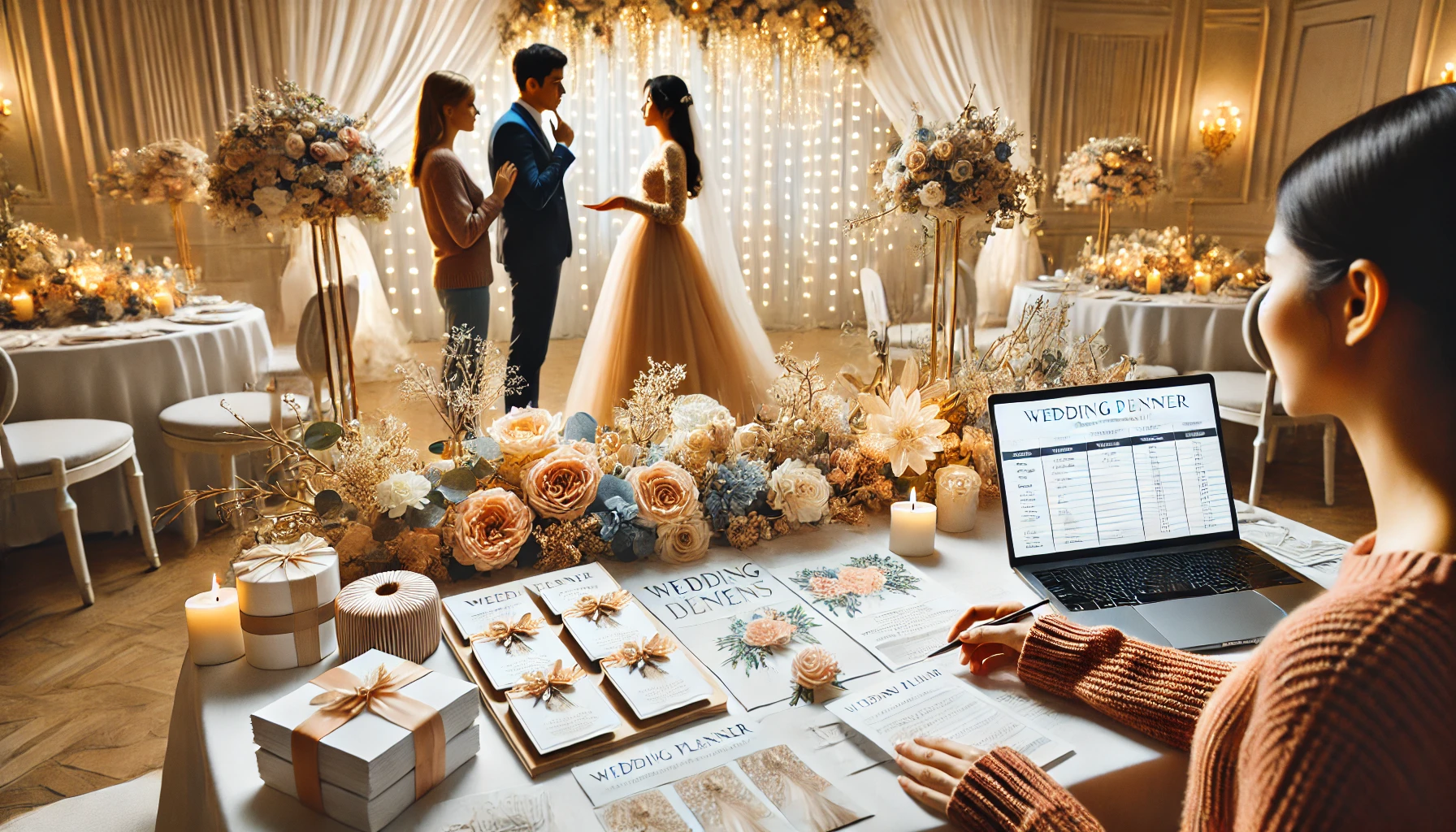A wedding is one of the most special days in a couple’s life, and planning it requires attention to detail, creativity, and organization. Whether you’re planning a small, intimate ceremony or a grand celebration, the key to success is thorough preparation. This guide will take you through the essential steps to plan a wedding that your guests will never forget.
1. Set a Budget and Prioritize Expenses
The first step in wedding planning is setting a realistic budget. This will help you make informed decisions about every aspect of your wedding. Consider the following major expenses:
💍 Venue
🍽️ Catering
📸 Photography & Videography
💐 Decorations & Flowers
🎶 Entertainment (DJ or Band)
👗 Wedding Attire (Dress & Suit)
💌 Invitations & Stationery
🎁 Wedding Favors
Tip: Prioritize what matters most to you. If photography is your top priority, allocate a larger budget for it while saving on other aspects like DIY decorations.
2. Choose the Perfect Venue
The venue sets the mood for the entire event. When selecting a location, consider:
✔️ Guest Capacity – Make sure it comfortably accommodates all your guests.
✔️ Accessibility – Is it easy for guests to reach?
✔️ Ambience – Does it match your wedding theme (e.g., rustic, modern, beach, garden)?
✔️ Weather Considerations – For outdoor weddings, always have a backup plan in case of rain.
Book the venue well in advance to secure your preferred date.
3. Select a Wedding Theme and Style
Choosing a theme makes the wedding feel cohesive and visually stunning. Some popular wedding themes include:
✨ Rustic: Wooden decorations, fairy lights, and wildflowers.
💎 Elegant: Luxurious fabrics, crystal chandeliers, and classic floral arrangements.
🌊 Beach: Light fabrics, barefoot ceremonies, and tropical flowers.
🎭 Vintage: Antique decor, lace dresses, and classic music.
Your color palette, invitations, and floral arrangements should align with your chosen theme.
4. Create a Guest List and Send Invitations
Decide on the number of guests based on your budget and venue capacity. When creating your guest list, consider:
✔️ Family and close friends first
✔️ Plus-one policies
✔️ Seating arrangements (formal or casual)
Once the list is finalized, send invitations at least 3-6 months in advance. You can opt for:
📩 Traditional paper invitations
📧 Digital invitations (eco-friendly and cost-effective)
Include RSVP details and a wedding website (if applicable) for easy communication.
5. Plan the Ceremony and Reception
The wedding ceremony should reflect your love story and values. Some elements to plan:
💍 Officiant – Religious, civil, or symbolic ceremony?
📜 Vows – Will you write personal vows or follow traditional ones?
🎻 Music – Live music, DJ, or pre-recorded playlists?
For the reception, consider:
✔️ Seating Arrangements – Assigned seating or open seating?
✔️ Entertainment – Live band, DJ, dance floor, or special performances?
✔️ Food & Drinks – Buffet, plated dinner, or food stations?
✔️ First Dance & Speeches – When and where will these happen?
6. Choose Your Wedding Attire
The wedding dress and suit/tuxedo should align with the event’s style and season. When shopping for outfits:
👗 For the Bride: Start dress shopping at least 6-9 months before the wedding to allow for fittings and alterations.
🤵 For the Groom: Choose a suit/tuxedo that complements the wedding theme.
👰 Bridal Party & Groomsmen: Coordinate colors with the overall aesthetic.
7. Hire Vendors and Services
A wedding involves multiple vendors, so hiring reliable professionals is crucial. Essential vendors include:
📸 Photographer & Videographer – Capture every special moment.
🍽️ Caterer – Ensure quality food and drink options.
🎶 DJ/Band – Create the right mood with music.
💄 Hair & Makeup Artist – Make sure you and your bridal party look stunning.
🚗 Transportation – Arrange guest shuttles or special cars for the couple.
When choosing vendors, read reviews, ask for samples/portfolio, and sign contracts to avoid surprises.
8. Plan the Wedding Decor and Flowers
Decorations and flowers transform the venue into a dreamy setting. Focus on:
💐 Bouquets & Centerpieces – Fresh or artificial flowers? Seasonal flowers can save costs.
🎀 Table Decorations – Elegant tableware, candles, or thematic elements.
✨ Lighting – Fairy lights, candles, chandeliers, or neon signs can set the mood.
DIY decorations can help cut costs and add a personal touch.
9. Organize the Timeline for the Big Day
Having a structured schedule ensures a smooth wedding day. Here’s a general timeline:
📅 Morning: Hair, makeup, and photoshoot.
💍 Afternoon: Ceremony and cocktail hour.
🎉 Evening: Dinner, speeches, and dancing.
🎆 Night: Cake cutting, bouquet toss, and final send-off.
Share this timeline with vendors and bridal party members to keep everything on track.
10. Prepare for Unexpected Situations
Even the best-planned weddings can have last-minute hiccups. Be prepared for:
⚠️ Bad Weather: Have indoor backup options.
⚠️ Wardrobe Malfunctions: Keep a sewing kit and extra accessories.
⚠️ Vendor Issues: Always have alternative contacts.
⚠️ Guest Emergencies: Appoint someone to handle unexpected situations.
A wedding coordinator (or a trusted friend) can help manage last-minute details so you can enjoy your day stress-free.
11. Capture and Share Memories
After the wedding, share memories with guests:
📸 Create an Online Photo Album – Share pictures through Google Drive or a wedding website.
🎥 Highlight Video – A short recap of the best moments.
✍️ Guestbook or Digital Messages – Preserve heartfelt messages from loved ones.
Sending a thank-you note to guests and vendors is a thoughtful way to show appreciation.
Final Thoughts
Planning a wedding is a journey filled with excitement and emotions. By setting a budget, organizing details in advance, and preparing for contingencies, you can create a stress-free and magical celebration. Whether big or small, the most important thing is that your wedding reflects your love story.
Now, you’re ready to plan a wedding that everyone will remember! 💍🎉
